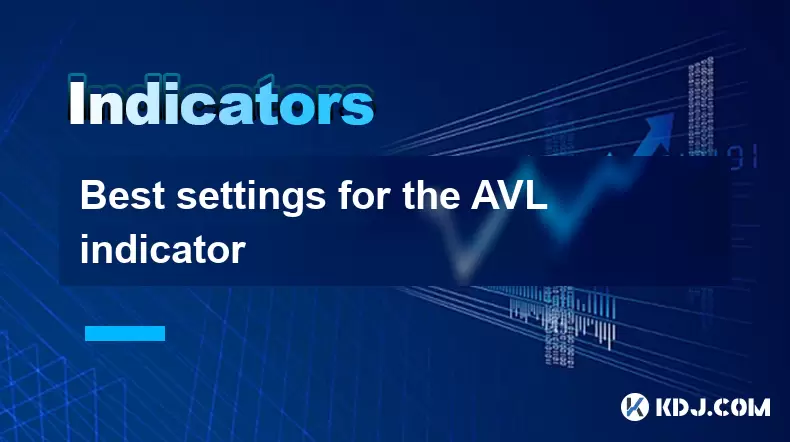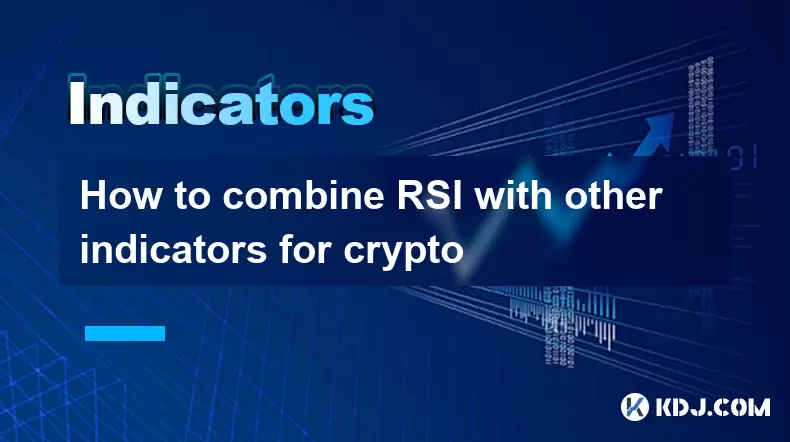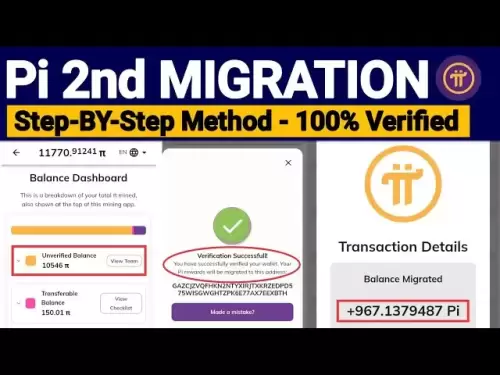-
 Bitcoin
Bitcoin $117,991.5647
-0.03% -
 Ethereum
Ethereum $2,966.4808
0.18% -
 XRP
XRP $2.8076
0.64% -
 Tether USDt
Tether USDt $1.0003
0.00% -
 BNB
BNB $689.9050
-0.63% -
 Solana
Solana $162.0407
-0.80% -
 USDC
USDC $0.9999
0.00% -
 Dogecoin
Dogecoin $0.1995
-1.51% -
 TRON
TRON $0.3001
-1.21% -
 Cardano
Cardano $0.7426
3.25% -
 Hyperliquid
Hyperliquid $47.7978
2.84% -
 Stellar
Stellar $0.4411
16.52% -
 Sui
Sui $3.4267
0.15% -
 Chainlink
Chainlink $15.3148
0.07% -
 Bitcoin Cash
Bitcoin Cash $506.5880
-1.91% -
 Hedera
Hedera $0.2222
12.41% -
 Avalanche
Avalanche $21.2049
1.67% -
 UNUS SED LEO
UNUS SED LEO $9.0606
-0.19% -
 Shiba Inu
Shiba Inu $0.0...01325
-0.86% -
 Toncoin
Toncoin $2.9979
0.32% -
 Litecoin
Litecoin $94.3717
1.13% -
 Polkadot
Polkadot $3.9873
-0.29% -
 Monero
Monero $336.1497
0.92% -
 Dai
Dai $0.9999
-0.01% -
 Uniswap
Uniswap $8.5189
-0.60% -
 Ethena USDe
Ethena USDe $1.0005
-0.04% -
 Pepe
Pepe $0.0...01236
-0.92% -
 Bitget Token
Bitget Token $4.4002
-0.23% -
 Aave
Aave $303.5433
1.05% -
 Bittensor
Bittensor $391.1314
-0.35%
Best settings for the AVL indicator
The AVL indicator, or Accumulation Volume Line, helps cryptocurrency traders assess buying or selling pressure by analyzing volume accumulation, offering insights into trend strength and potential reversals.
Jul 12, 2025 at 02:42 pm

Understanding the AVL Indicator and Its Purpose
The AVL indicator, also known as the Accumulation Volume Line, is a technical analysis tool used primarily in cryptocurrency trading to assess the strength of buying or selling pressure based on volume. Unlike traditional moving averages, the AVL focuses on volume accumulation over time. It's particularly useful for traders who want to confirm price trends using volume data.
In the context of cryptocurrencies like Bitcoin or Ethereum, where volatility can be extreme, the AVL helps identify potential reversals or continuations by analyzing how much volume is supporting the current price movement. When the AVL line rises, it suggests that buyers are actively accumulating assets. Conversely, a declining AVL line may indicate distribution or weakening demand.
Default Settings of the AVL Indicator
Most charting platforms come with default settings for the AVL indicator. These typically include:
- Period: 14 (commonly used in oscillators and volume indicators)
- Calculation method: Simple average
- Applied price: Close
These defaults work reasonably well for general market conditions but may not be optimal for every trader or asset. In fast-moving crypto markets, adjusting these parameters can significantly improve the accuracy of signals generated by the AVL.
It’s important to note that while the default period of 14 offers a balanced view between sensitivity and smoothness, it might lag behind real-time changes in volume dynamics during high volatility periods.
Customizing the Period Setting for Better Responsiveness
One of the most impactful adjustments you can make to the AVL indicator is changing its period setting. Lowering the period makes the indicator more sensitive to recent volume changes, which can be crucial in volatile crypto environments.
Consider the following customizations:
- For short-term trading: Set the period to 7 or 9
- For medium-term strategies: Use periods between 10 and 15
- For long-term trend confirmation: Stick with periods above 20
Each of these options has trade-offs. A lower period value increases responsiveness but may result in false signals. Higher values offer smoother lines but may delay entry or exit points. Traders should test different period settings across multiple timeframes to find what works best for their strategy.
Incorporating Weighted Moving Averages for Smoother Signals
While the standard AVL uses a simple moving average, switching to a weighted moving average (WMA) or exponential moving average (EMA) can enhance its performance. These types of averages give more weight to recent data, making them more responsive to new information.
Here’s how to implement this change:
- Look for an option in your platform to modify the calculation method
- Select Weighted or Exponential instead of Simple
- Observe how the AVL line reacts differently to volume surges
This tweak can help filter out noise and provide clearer indications of accumulation or distribution phases. However, it requires backtesting to ensure it aligns with your trading goals and doesn’t introduce unintended bias.
Combining the AVL with Price Action and Other Indicators
No single indicator should be used in isolation, especially in the unpredictable world of cryptocurrency trading. The AVL indicator performs best when combined with other tools such as:
- Price patterns (e.g., head and shoulders, double tops/bottoms)
- Moving averages (e.g., 50-day and 200-day)
- Relative Strength Index (RSI)
- Volume Profile
For instance, if the AVL line is rising while RSI shows oversold conditions, it could signal a strong reversal opportunity. Similarly, divergences between the AVL and price action often precede significant moves, offering early clues about potential shifts in market sentiment.
Backtesting and Optimization Techniques
Before applying any customized AVL settings to live trading, it's essential to conduct thorough backtesting. This involves applying the modified indicator to historical data to see how it would have performed under past market conditions.
Here’s how to approach it:
- Choose a specific cryptocurrency pair (e.g., BTC/USDT)
- Apply your custom AVL settings
- Compare the indicator’s signals with actual price movements
- Identify false signals and adjust parameters accordingly
Optimization is an ongoing process. Markets evolve, and what worked six months ago may no longer be effective. Continuously refining your AVL configuration ensures it remains relevant in dynamic crypto environments.
Frequently Asked Questions
Q: Can the AVL indicator be used effectively on all timeframes?
A: Yes, the AVL indicator can be applied to any timeframe, but its effectiveness varies. Shorter timeframes like 1-hour or 4-hour charts benefit from more frequent volume updates, while daily or weekly charts offer broader trend insights.
Q: Is the AVL suitable for altcoin trading?
A: Absolutely. Many altcoins exhibit erratic volume patterns, and the AVL indicator helps traders discern whether a price move is supported by genuine volume or just short-term speculation.
Q: How does the AVL differ from the OBV (On-Balance Volume)?
A: While both track volume flow, the AVL indicator calculates a smoothed average of volume, whereas OBV adds or subtracts full volume bars depending on price direction. This makes AVL less prone to sudden spikes compared to OBV.
Q: What platforms support customizable AVL indicators?
A: Major platforms like TradingView, Binance Smart Trader, and MetaTrader allow customization of the AVL indicator. Users can adjust periods, moving average types, and even overlay it with other volume-based tools for enhanced analysis.
Disclaimer:info@kdj.com
The information provided is not trading advice. kdj.com does not assume any responsibility for any investments made based on the information provided in this article. Cryptocurrencies are highly volatile and it is highly recommended that you invest with caution after thorough research!
If you believe that the content used on this website infringes your copyright, please contact us immediately (info@kdj.com) and we will delete it promptly.
- Crypto, Gold, and Bitcoin: A New York Minute on the Digital Gold Rush
- 2025-07-13 20:30:16
- Crypto iGaming in India: JetTon, LunarBet, and the Evolving Landscape
- 2025-07-13 20:50:16
- XRP Price, Whales, and Payment Tokens: A New Era for Crypto?
- 2025-07-13 20:35:16
- Justin Sun, Tron, and Fee Reduction: A New Era for the Network?
- 2025-07-13 21:10:11
- Shiba Inu, Little Pepe, and the $1 Dream: A Meme Coin Showdown
- 2025-07-13 20:50:17
- XRP Price Gears Up: Will Accumulation Lead to a $7 Breakout?
- 2025-07-13 21:10:12
Related knowledge

Advanced RSI strategies for crypto
Jul 13,2025 at 11:01am
Understanding the Basics of RSI in Cryptocurrency TradingThe Relative Strength Index (RSI) is a momentum oscillator used to measure the speed and chan...

Crypto RSI for day trading
Jul 12,2025 at 11:14am
Understanding RSI in the Context of Cryptocurrency TradingThe Relative Strength Index (RSI) is a momentum oscillator used to measure the speed and cha...

Crypto RSI for scalping
Jul 12,2025 at 11:00pm
Understanding RSI in the Context of Crypto TradingThe Relative Strength Index (RSI) is a momentum oscillator widely used by traders to measure the spe...

What does an RSI of 70 mean in crypto
Jul 13,2025 at 06:07pm
Understanding the RSI Indicator in Cryptocurrency TradingThe Relative Strength Index (RSI) is a widely used technical analysis tool that helps traders...

How to avoid RSI false signals in crypto
Jul 13,2025 at 06:21pm
Understanding RSI and Its Role in Crypto TradingThe Relative Strength Index (RSI) is a momentum oscillator used to measure the speed and change of pri...

How to combine RSI with other indicators for crypto
Jul 12,2025 at 08:35am
Understanding the Role of RSI in Crypto TradingThe Relative Strength Index (RSI) is a momentum oscillator that measures the speed and change of price ...

Advanced RSI strategies for crypto
Jul 13,2025 at 11:01am
Understanding the Basics of RSI in Cryptocurrency TradingThe Relative Strength Index (RSI) is a momentum oscillator used to measure the speed and chan...

Crypto RSI for day trading
Jul 12,2025 at 11:14am
Understanding RSI in the Context of Cryptocurrency TradingThe Relative Strength Index (RSI) is a momentum oscillator used to measure the speed and cha...

Crypto RSI for scalping
Jul 12,2025 at 11:00pm
Understanding RSI in the Context of Crypto TradingThe Relative Strength Index (RSI) is a momentum oscillator widely used by traders to measure the spe...

What does an RSI of 70 mean in crypto
Jul 13,2025 at 06:07pm
Understanding the RSI Indicator in Cryptocurrency TradingThe Relative Strength Index (RSI) is a widely used technical analysis tool that helps traders...

How to avoid RSI false signals in crypto
Jul 13,2025 at 06:21pm
Understanding RSI and Its Role in Crypto TradingThe Relative Strength Index (RSI) is a momentum oscillator used to measure the speed and change of pri...

How to combine RSI with other indicators for crypto
Jul 12,2025 at 08:35am
Understanding the Role of RSI in Crypto TradingThe Relative Strength Index (RSI) is a momentum oscillator that measures the speed and change of price ...
See all articles

























































































